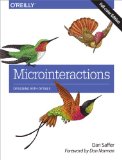Chaos Planning, by Sean D'Souza, covers ways to plan while considering the chaos that usually affects the best laid plans.
The Premium version also includes Pronto Learning: Insiders Tips To Speed Up Your Learning .
Both are quite short and to the point – it took me about an hour to read them while taking notes.
The main principles of Chaos Planning are interesting – add extra time to your to-do lists and plans, so that they don't crumble when the unexpected happens.
Other ideas on Chaos Planning are:
– Write down and get external pressure (such as clients, friends or other people in a forum).
– Get actually competent at stuff you regularly do, instead of blundering through. Do a daily practice of 15 minutes to learn something – starting and stopping (a problem I commonly have) makes it hard to learn. Bring it with you for when you have to wait in lines – E-book reader apps are great for this, depending on your smartphone screen, or just take a physical book with you if possible.
– Go through what you want to learn several times, at increasing interval. I have read this several times before and have seen it on Pragmatic Thinking and Learning, Learning on Steroids, and the Superlearner course , so it is very much recommended. The hard thing is getting the time for it, but having good notes (that you wrote yourself – apparently these work much better than just copy and pasting book material) helps.
– Do pre-sells to get a real deadline. They also help test viability of a product and tend to help sales, and you can e-mail (and maybe send a bonus) and do refunds if you really can't pull it through. Sean also has a pre-sell course.
– Clear distractions, such as excessive e-mail newsletters (not mine, I hope!).
Pronto Learning: Insiders Tips To Speed Up Your Learning:
– Plan to teach what you learn, even if it is just mentioning it to an spouse or colleague, or maybe doing a blog post – your mindset is different and it is easier to find the gaps in what you learned. Actually applying what you learn is even better.
– Again, the repeated learning principle, recommending a week for the first time and then months.
– Take real breaks (not just going on Facebook or random sites) – take a 20 minutes nap, go to a cafe, etc.
– 15 minute principle, if you can't understand something, or solve a problem in 15 minutes, ask for help and take a break. Or look at Google/YouTube for a tutorial.
– Use dead time: listen to workshops or audiobooks while exercising, or read a book while waiting.
– Make a list of important tools and skills and go through them.
Conclusion
Overall, I think they were OK, and barely covers the asking price. Sean's stuff isn't cheap, but at least it is not packed with filler and it is a quick read. It definitely has useful information, though.


